So you have your honeysuckle sitting in the garden but feel like adding more charm to it or just growing something else on the vacant earth below. If you are curious about which plants would go well with your flowering climbers, then you are on the right page. We're here to tell you exactly what choices you have for what to plant under honeysuckle.
Rose is a classic choice to pair up with honeysuckle but many other kinds of shrubs and climbers may be planted under honeysuckle. Your choice of plant, however, should be able to tolerate the same growing conditions as your honeysuckle. You have plenty of choices since many plants survive in partial or full shade and an evenly moist soil that drains well.
In this article, we will give recommendations on specific plants to grow under honeysuckle. We will also explain further the growing environment of this flower climber for full understanding. With more knowledge, you'll have more options and more freedom to choose, even beyond our recommendations.

Honeysuckle General Information

Before jumping right into which plants to grow under honeysuckle, it only makes sense that you know your plant well. Through this, you grow your options and it becomes easier to decide which plants would be best to pair it up with.
Honeysuckle is a flowering vine that comes in over 180 varieties. The fragrant flowers of the honeysuckle bloom to their fullest in full sun but partial shade would still not hinder their ability to produce flowers.
If you want to achieve a sweet, summer look in the garden, the honeysuckle will not disappoint. Combining it with another flowering climber, which is a popular gardening idea, also creates a scenic accent. But honeysuckle can also be used for other purposes.
This vine that grows up to 12 inches per annum and gets as long as 30 feet in full maturity may be used to hide unwanted spots in your garden. With help from a sturdy trellis, shrubby varieties help improve privacy.
Invasive and Non-Invasive Honeysuckle
On the other hand, some varieties tend to do more harm than good as they continue to grow in the area. Morrow's honeysuckle, Japanese honeysuckle, and Amur honeysuckle are some examples of problematic varieties as they can turn invasive at some time after planting.
Honeysuckle roots can grow longer than 12 inches in some cases. This makes the plant quite a work to eliminate when it becomes invasive. While you can simply pull out the roots of younger honeysuckle to kill the plant, you might require tools to remove matured ones. Alternatively, you can cut the stem as closest to the root as possible and apply herbicide.
Choosing non-invasive honeysuckle is the best thing to do to avoid problems later on. Some popular choices for gardens that are easy to grow yet non-invasive include the trumpet honeysuckle, gold flame honeysuckle, and Brown's honeysuckle.
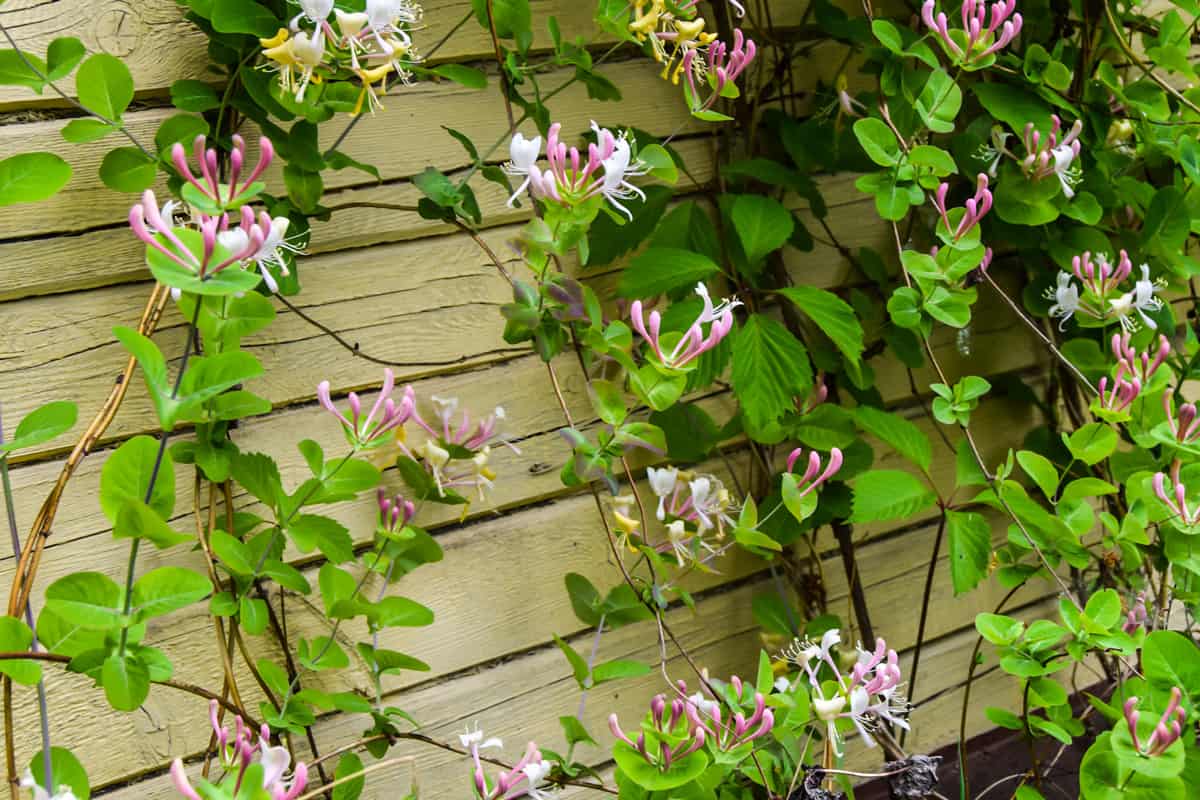
What To Plant Under Honeysuckle
Honeysuckle grows easily under full sun or where it receives 6 hours of full sun a day. You would not have problems growing it in a partially shaded area or where it receives around 2 hours of sun per day as well. Some varieties have the woodland as their natural habitat and may bloom profoundly even in partial shade.
In addition to sunlight requirements, honeysuckle also needs evenly moist soil that drains well. You might need to add mulch to your soil every once in a while to retain moisture.
Now that you know the growing environment essential to honeysuckle growth, the search for an ideal plant to pair is easier.
Roses

Roses are a popular choice to plant under your honeysuckle. The pair never fails to give the classic summer look, not to mention the sweet, delicate fragrance they create when combined.
It is not that difficult to grow roses and honeysuckle in the same area. This is because roses also need full sun and moist soil with good drainage to bloom to their best.
Roses come in different varieties like the honeysuckle. Some varieties acquire shrubby properties that are perfect to be planted under your honeysuckle. Some varieties are great climbers and ground covers.
When choosing a rose to plant under your honeysuckle, get to know your variety and make sure its properties complement those of your honeysuckle. Rose flowers come in different colors and sizes. Choosing the variety that would go well with your honeysuckle will improve the appearance of your garden when they bloom together from spring to early fall.
Indian Pink
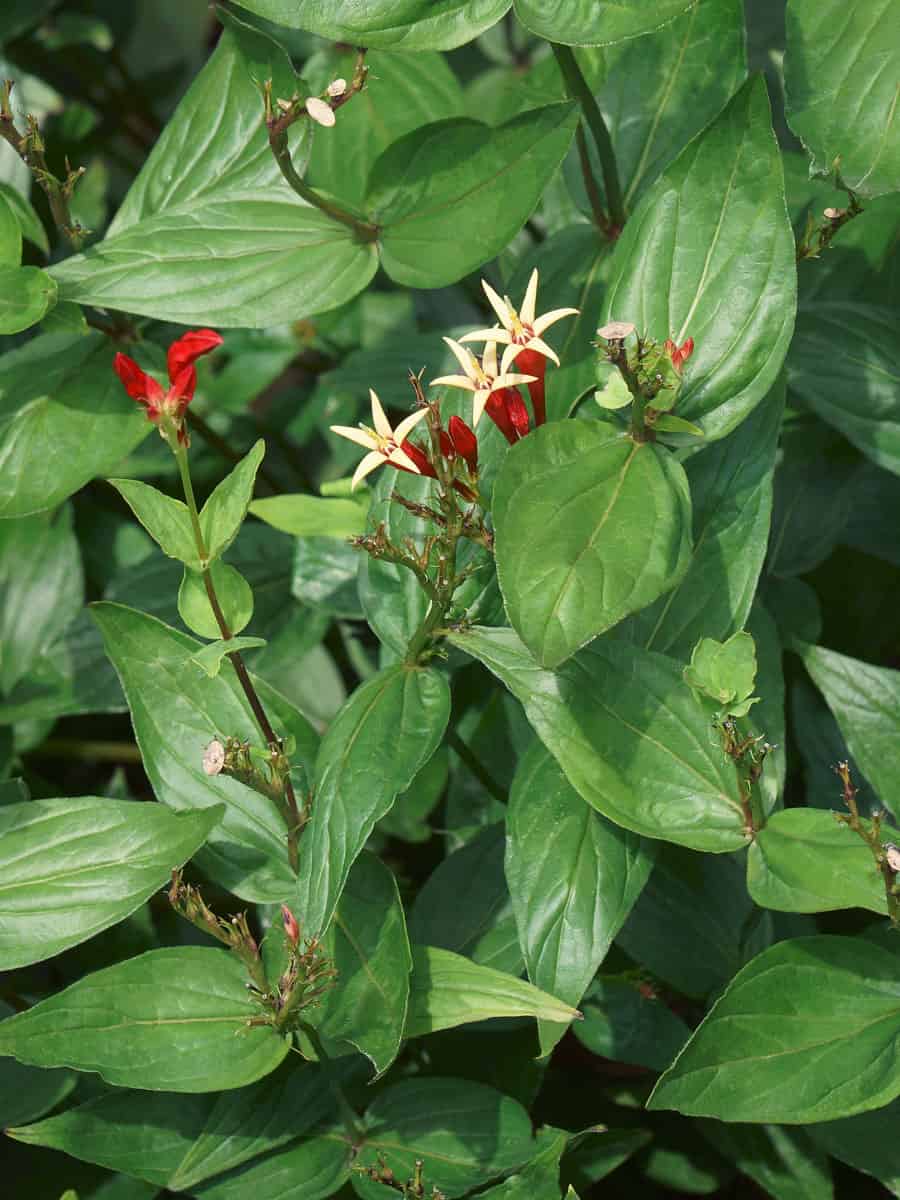
This perennial is also a good choice to grow next to or under honeysuckle. It thrives under the same growing conditions and may or may not need full sun.
If you have grown your honeysuckle vertically, Indian pinks make good addition under them because they do not go taller than 2 feet. They do not spread as much as well, only around 1.5 feet at their widest.
Like honeysuckle, Indian pinks produce nectar which is likely to attract lots of birds and butterflies to your garden when they are in full bloom.
Canada Columbine
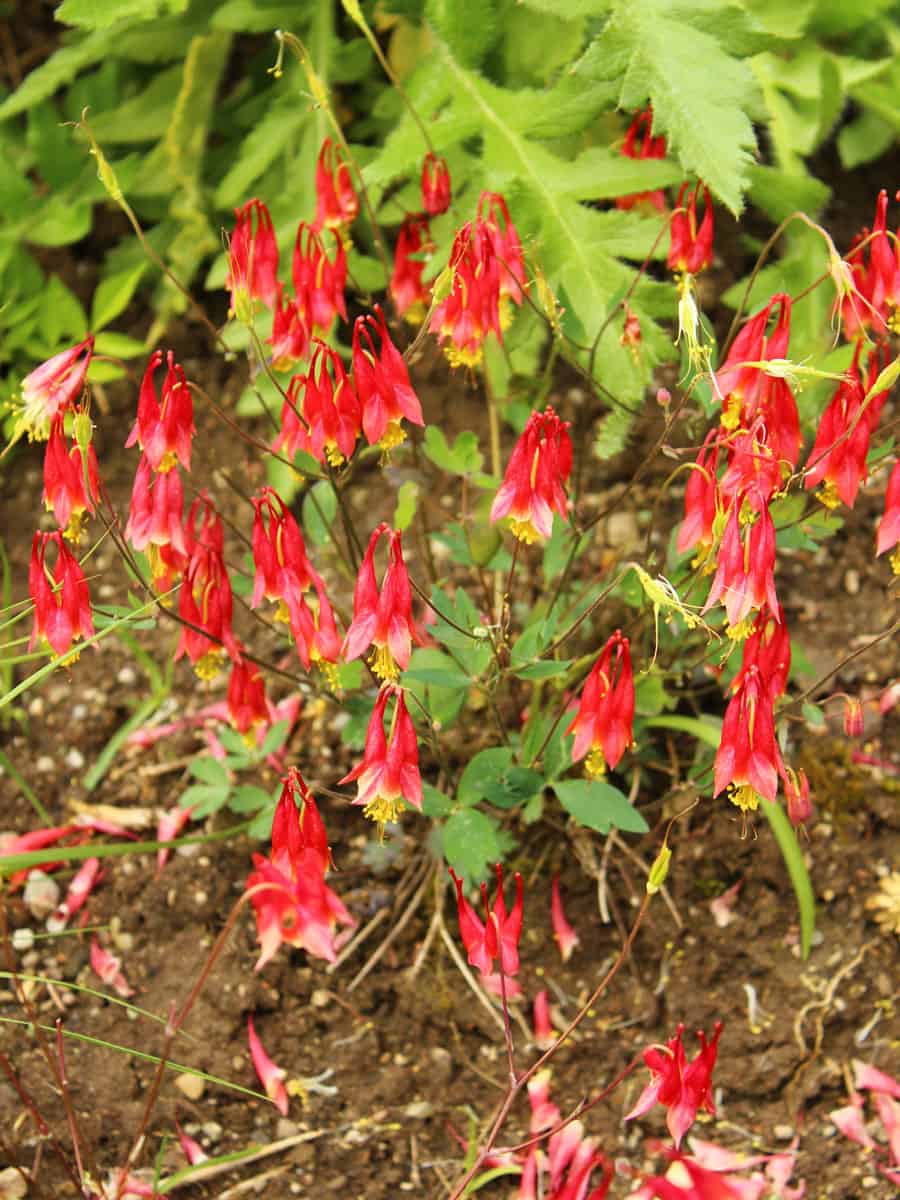
This herbaceous perennial is also known as wild columbine and eastern red columbine. Canada columbine may also be planted under honeysuckle. It does not grow taller than 35 inches, which makes it an ideal choice to plant under honeysuckle grown on trellis, pergola, or wall. Canada columbine has flowers in yellow and red combination which grow up to 5 centimeters long.
Canada columbine also has medicinal properties which means you do not just get the ornamental attributes of the species. Native Americans use the plant as a remedy for rash, headache, sore throat, and other minor ailments.
Gooseberry
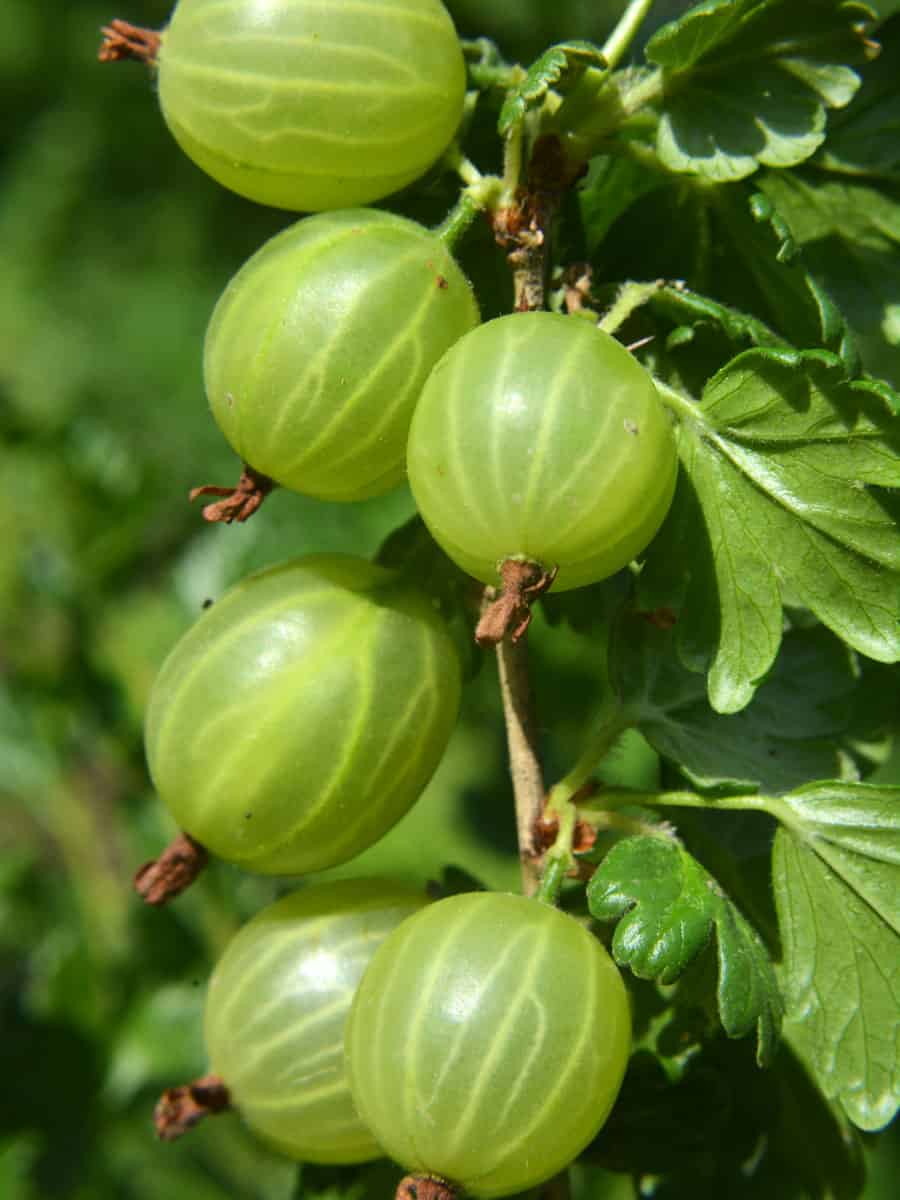
Gooseberry is also compatible with honeysuckle which means they can be plated right next to each other. You just have to maintain a 1.5-meter gap between them.
Aside from moist, well-drained soil, gooseberries will produce sweeter fruits when they are in full sun. If choosing this particular plant species, make sure your honeysuckle does not block the sunlight.
Currant
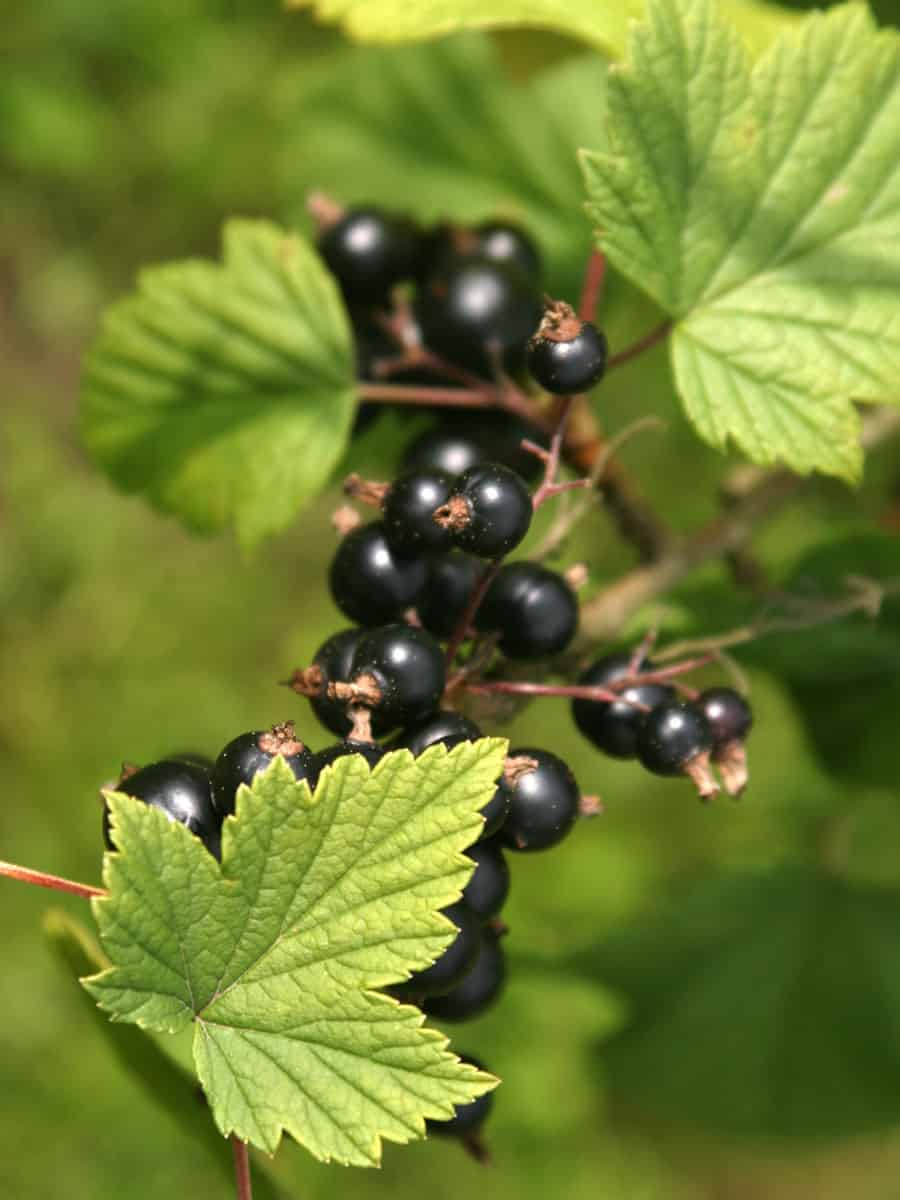
Honeysuckle and currant have plenty of similarities when it comes to their required growing environment. Furthermore, they are both easy to care for and frost-resistant. Their chemical properties are interestingly compatible as well which gives you the advantage of planting them side by side without problems later on.
Check out this post for a list of shrubs that could possibly grow under honeysuckle: 15 Low Maintenance Evergreen Shrubs For Your Garden
Planting Under Honeysuckle Tips
While you have a lot of choices, you should also know that not all plants are compatible with honeysuckle. To avoid negative consequences at the end of the day, you may use the following tips when choosing what to plant under honeysuckle.
Healthy damp soil and sunlight aren't the only requirements when you want to grow any plant. You should make sure that the plant you are considering is compatible with honeysuckle. For example, you should choose a plant that can tolerate soil that has a pH level that ranges between 5.5 and 8.
Some plants also grow too tall which could block the sunlight needed by your honeysuckle. Others spread too much which could cause branches and stems to intertwine with one another.
Honeysuckles should be planted at least 3 feet apart from each other but keep a distance of 2.5 meters at least if you are planting bushes next to them. Remember that bushes could spread too much once they reach maturity. You don't want to resolve intertwined branches later in your gardening journey.
Keeping an appropriate distance between your honeysuckle and new plant also avoids competition on nutrition and water requirements.
What Climber Goes With Honeysuckle?
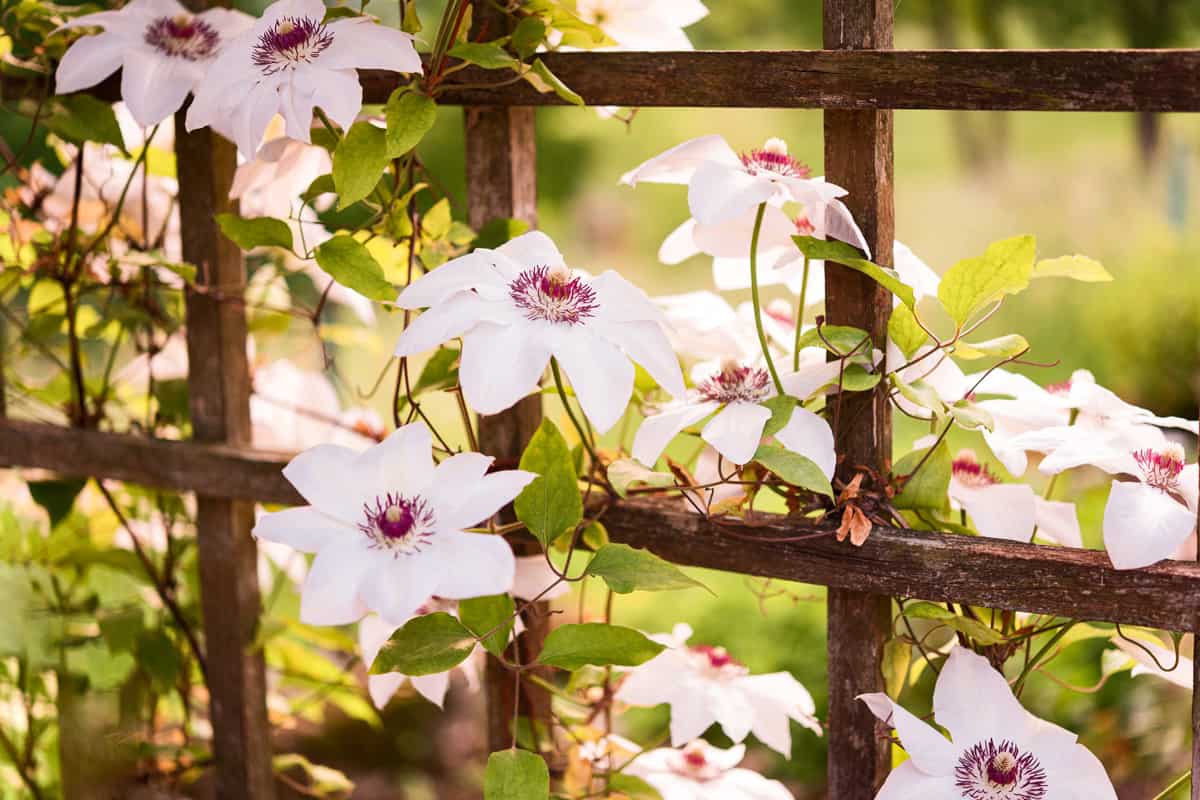
Many climbers go with honeysuckle but clematis is among the most common choices. They make an ideal pair because both grow beautiful fragrant flowers and tolerate full sun or partial shade. Clematis also likes moist soil that drains well and has moderate alkalinity.
Clematis is a perennial vine which makes it long-lived. It also has longer seasons of full bloom.
Aside from clematis, climbing roses and honeysuckle together produce a fairytale-like background when grown vertically.
You can read this related post to get more ideas on vines that don't need full sun to grow:
Final Thoughts
Honeysuckle is a low-maintenance plant that doesn't take too much special care and grows well in many light conditions. It thrives in moist but well-drained soil. While you cannot grow plants that don't adapt to the same growing conditions, you still have a lot of choices ranging from trees, shrubs, and even climbers if you want to plant under honeysuckle.
If you find this post helpful, you might also like reading our other posts:
The 15 Best Perennials For A Vertical Garden
11 Beautiful Climbing Flowering Shrubs And Vines

